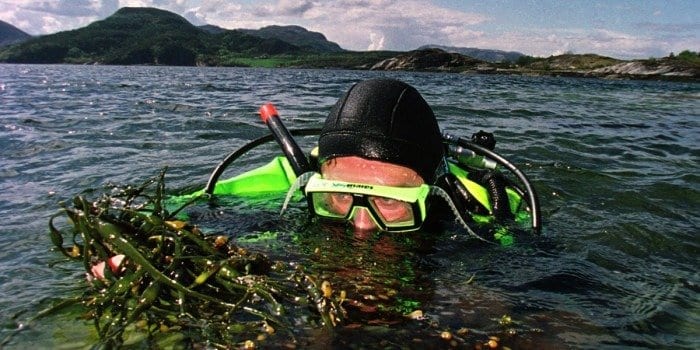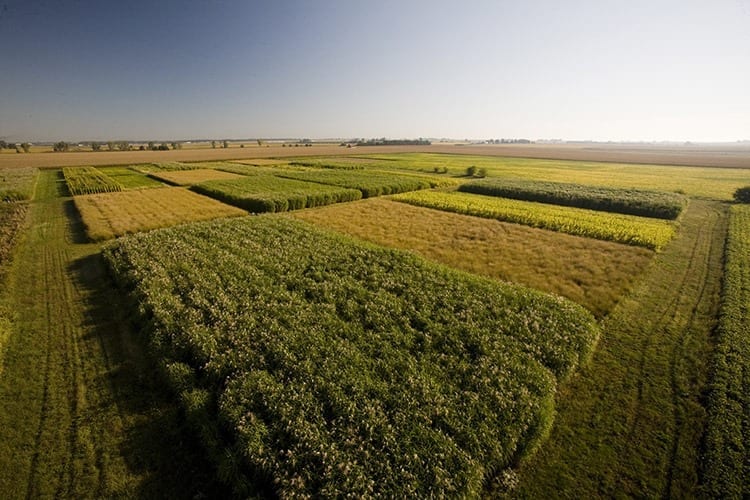
A Norwegian research group has been able to achieve bio-oil yields of 79% from a common kelp.
Other researchers working with the same species have yields closer to 20%. The secret is to heat the kelp very quickly and bring it to the right temperature within seconds.
The sea has long been a source of Norway’s riches, whether from cod, farmed salmon or oil. Now one NTNU researcher hopes to add seaweed to this list as he refines a way to produce “biocrude” from common kelp.
“What we are trying to do is to mimic natural processes to produce oil,” said Khanh-Quang Tran, an associate professor in NTNU’s Department of Energy and Process Engineering. “However, while petroleum oil is produced naturally on a geologic time scale, we can do it in minutes.”
Tran conducted preliminary studies using sugar kelp (Laminaria saccharina), which grows naturally along the Norwegian coast. His results have just been published in the academic journal Algal Research.
The breakthrough
Using small quartz tube “reactors” – which look like tiny sealed straws – Tran heated the reactor containing a slurry made from the kelp biomass and water to 350 degrees C at a very high rate of 585 degrees C per minute.
The technique, called fast hydrothermal liquefaction, gave him a bio-oil yield of 79%. That means that 79 % of the kelp biomass in the reactors was converted to bio-oil. A similar study in the UK using the same species of kelp yielded just 19%. The secret, Tran said, is the rapid heating.
Falling short on biofuel production
Biofuel has long been seen as a promising way to help shift humankind towards a more sustainable and climate friendly lifestyle. The logic is simple: petroleum-like fuels made from crops or substances take up CO2 as they grow and release that same CO2 when they are burned, so they are essentially carbon-neutral.
In its report “Tracking Clean Energy Progress 2014”, the International Energy Agency (IEA) says that biofuel production worldwide was 113 billion litres in 2013, and could reach 140 billion litres by 2018.
That may sound like a lot – but the IEA says biofuel production will need to grow 22-fold by 2025 to produce the amount of biofuel the world will need to keep global temperatures from rising more than 2oC.
The problem is the biomass feedstock. It’s relatively easy to turn corn or sugar beets into ethanol that we can pump right into our petrol tanks. But using food biomass for fuel is more and more problematic as the world’s population climbs towards 8 billion and beyond.
To get around this problem, biofuel is now produced from non-food biomass including agricultural residues, land-based energy crops such as fast-growing trees and grasses, and aquatic crops such as seaweed and microalgae.
All of these feedstocks have their challenges, especially those that are land based. At least part of the issue is the fact that crops for biofuel could potentially displace crops for food.
However, seaweed offers all of the advantages of a biofuel feedstock with the additional benefit of growing, not surprisingly, in the sea.
The Latest on: Seaweed biofuel
[google_news title=”” keyword=”Seaweed biofuel” num_posts=”10″ blurb_length=”0″ show_thumb=”left”]
via Google News
The Latest on: Seaweed biofuel
- Global Commercial Seaweed Market is Likely to Witness a Revenue of US$ 14.9 Billion at a CAGR of 2.4% by 2033 | Future Market Insights, Inc.on April 26, 2024 at 2:42 am
The commercial seaweed market size is estimated to be nearly US$ 11.7 Billion in 2023. The global market is poised to register a CAGR of 2.4% from 2023 to 2033. The overall valuation of the commercial ...
- Sargassum: That ‘Brown Gold’?on April 25, 2024 at 9:00 pm
Many Caribbean entrepreneurs see an unprecedented economic opportunity in the sargassum that has regularly swamped the region since 2011.
- What the Heck Is Seaweed Mining?on April 25, 2024 at 12:38 am
Preliminary research suggests seaweed can trap and store valuable minerals. Is this the beginning of a new type of mining?
- A leader in US seaweed farming preaches, teaches and builds a wider networkon April 22, 2024 at 1:12 am
Bren Smith and his GreenWave organization are helping lay the foundations for a generation of seaweed-growing farmers in the United States, while working to build a network of producers and buyers.
- Seaweed microbots could one day treat cancer, researcher sayson April 10, 2024 at 5:00 pm
Sort of like manufacturing cars in a robotic factory.” The tiny robots are made from seaweed and the team has found a way to produce millions of them in just minutes. They are about half the wid ...
- Seaweed beds restored to lower CO2 offer other benefitson March 31, 2024 at 12:01 am
Initiatives to have carbon dioxide (CO2) absorbed and captured in seaweed and seagrass are taking root across Japan, where the population is known for having a taste for a wide range of aquatic ...
- Top 6 Best Seaweed Supplements in 2024on March 25, 2024 at 5:00 pm
For a long time, seaweed has been a staple in Asian cuisine, but it’s only recently that Western societies have recognized its health benefits. As an abundant source of vitamins, minerals ...
- Is seaweed the solution to net zero aviation emissions?on March 17, 2024 at 5:16 am
Sea kelp is a form of seaweed that grows fast and is great at ... It is perfectly possible to turn kelp into a biofuel. Of course, when it is burned it will release CO2 into the atmosphere ...
- How A Korean Immigrant Beat The Odds To Go From Farmers Market To US Household Brand Nameon July 27, 2023 at 6:42 am
Seaweed is one of the world’s most abundant ... resource - not just for nutrition - but across sectors including biofuels, fertiliser, and more recently, as a breakthrough alternative to plastic ...
- Meet the climate startup turning a 5,000-mile stretch of seaweed from a plague of coastal communities into a giant carbon storeon May 24, 2023 at 7:48 am
biofuels, and beauty products. Seaweed sequesters an estimated 175 million tons of carbon annually as it sinks into the deep sea — around 0.5% of global emissions. Estridge wants to help ...
via Bing News










